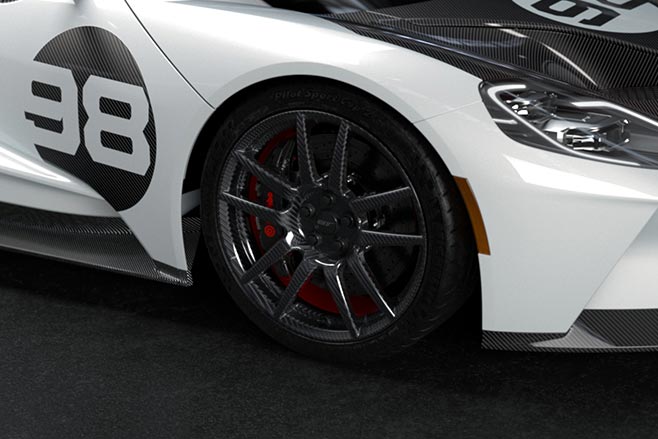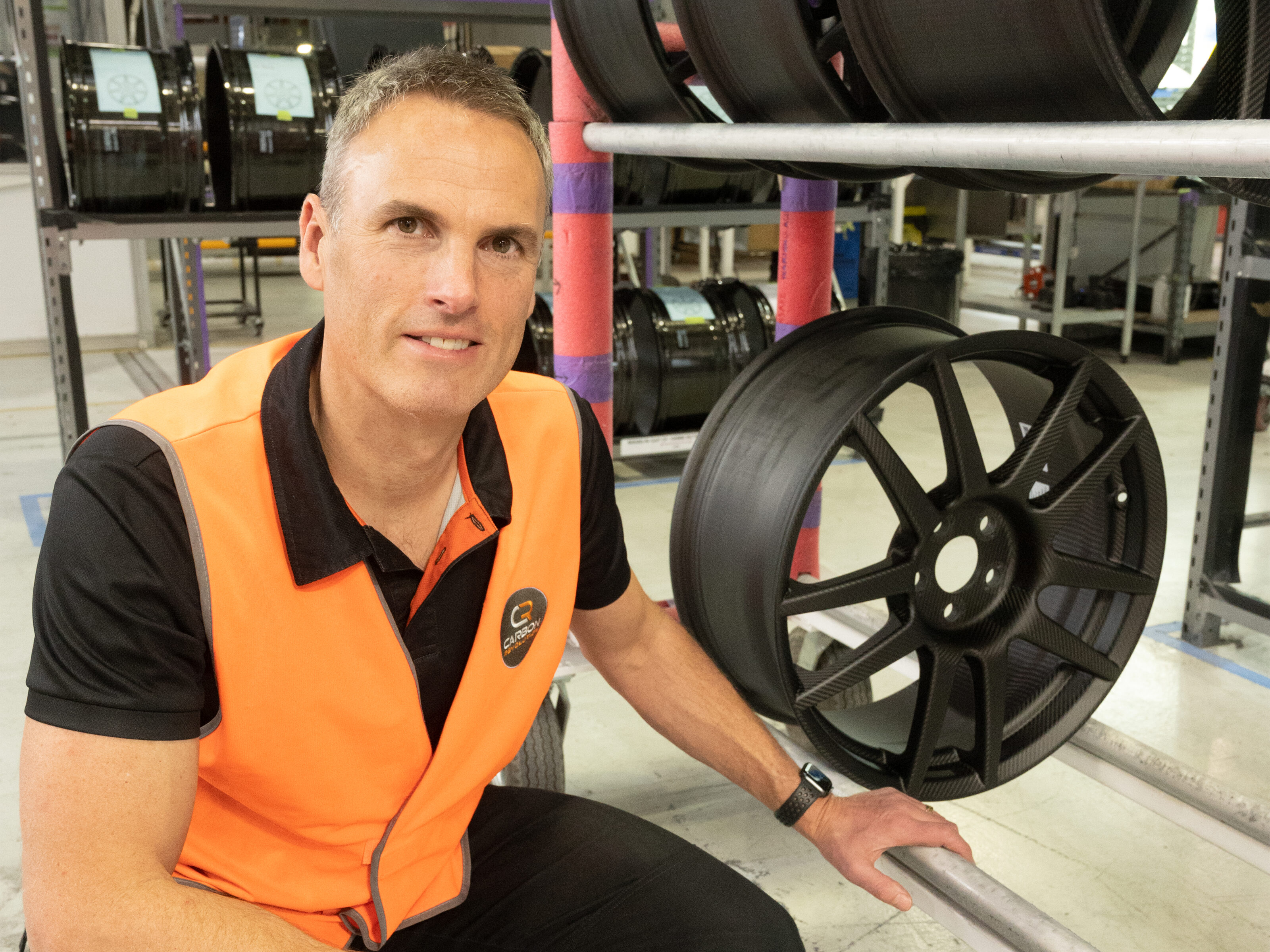You’d think seeing your company’s wheels bolted to Ferrari’s new front-engine masterpiece, the 812 Competizione, straight from the factory would signal you’ve made it.
But it’s clear when speaking to Carbon Revolution’s Chief Executive Officer, Jake Dingle, the Australian firm has always intended to serve more than supercars with its carbonfibre wheels. After all, that’s what compelled him to leave a high-powered corporate career and develop the company his brother Matt had begun with a founding group of graduate engineers back in 2007.
“One of the things that got me interested – and I wouldn’t have got involved otherwise – was that we wanted to approach this as something that could be a disruptive technology,” Dingle says.
Originally, his brother helped a student team make carbonfibre wheels to compete in a university-based motorsport competition called Formula SAE. A one-piece carbonfibre wheel had essentially not been made for road cars at that time. Together, they saw the opportunity to transition the technology, and Jake Dingle – who has an engineering honours degree – came on board part-time in early 2008.
“I had an engineering background, but I got involved not to be an engineer, but to pull the company together and to turn it into an entity rather than just the good idea in the engineering that was being done. Really to take the idea and transition it into an enterprise.”
In 2010, Dingle left an executive role to join full-time, selling his house to help fund a fledgling Carbon Revolution. Reflecting on why he made the decision, Dingle says he knew the business had a promising future. Positive interest early on from American and European customers bolstered his confidence. But the reality has also been tough: “I probably didn’t realise how hard it was going to be,” he adds.
Dingle became CEO in 2012, the year Carbon Revolution began selling aftermarket carbonfibre wheels. It later debuted its first OEM product on the 2015 Ford Shelby Mustang GT350R, which came with its own challenges.
“We thought we had a whole lot of things nailed because we had an aftermarket product, but when you go through the OEM process of validation, there’s a whole lot more rigour than any aftermarket in the world applies. And we’ve always set the business up to [be] an OEM supplier; the aftermarket was really just to get the product out there initially.”

The Ford Mustang GT350R was the first of many highlights. In late 2019 the company issued an Initial Public Offering at $2.60 per share, soaring to $4.20 in early 2020. “It was a successful IPO by any measure,” Dingle says, “followed by a global pandemic a few months later which took a bit of the icing off the cake. The global automotive supply chain that we participate in is still struggling its way out of the pandemic.”
When asked about what the pandemic has taught him so far, Dingle says resilience. Carbon Revolution raised capital early on to help it through and still employs over 400 people.
“There’s not too much you can do about it other than keep your people, maintain the integrity of your team, look after people and try to manage through it as best you can with lower volumes and uncertainty – and stay close to customers as well. It’s meant being nimble and agile; being entrepreneurial.”
Just on that last point, Carbon Revolution is also on the brink of constructing its first mega-line. It’s set to supercharge production capacity at the Geelong-based plant using advanced transport and conveyor systems to automate the factory line for new and, it hopes, existing wheels from 2023.

As for what’s coming next, it’s obvious when you think about segments desperate for weight savings. “Battery Electric Vehicles – the pick-up trucks and SUVs – that’s really where a lot of the demand is coming from,” Dingle says.
Although carbonfibre wheels are claimed to boost an EV’s driving range by five percent, while also reducing tyre noise, Dingle says Carbon Revolution could not rely on these things being obvious. To this end, it pinched Ford’s recently retired head chassis engineer, Ron Collins, in North America.
“Ron’s brought the OEM perspective on board to help us know exactly how to explain and communicate the benefits that we offer because that’s where he comes from.”
Although the company has interests in wheels for adjacent markets like freight or defence (it’s even developing a CH-47 Chinook helicopter wheel, for instance) the main focus is cars. “That’s where our IP and our competitive advantage lies.”

Ultimately, as a trickle-down technology, Carbon Revolution predicts carbonfibre wheels will displace half of aluminium wheel sales. But that’s a long way off, even with the mega-line. “At 200,000 or even a million wheels,” Dingle says, “we will not classify that as being classified as a mainstream product. We are still at a premium end and will be for some time. It’s one of the benefits of this.”
Fortunately, what that lured him in 14 years ago still drives him. “Oh, look, I think we are still on the path to achieving what we think its potential is … you maintain your energy as you see successful outcomes and progress against what you set out to achieve.”
With an SUV program due to launch next year and a number of EV jobs in the can, there’s clearly plenty to keep Dingle and Carbon Revolution on a roll.






